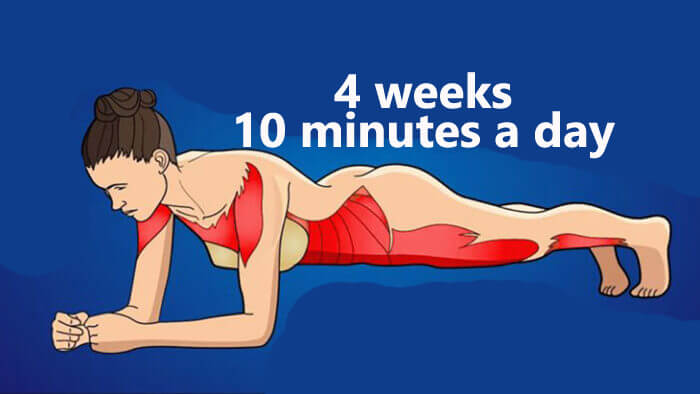If you walk, run, kick, jog, jump, change direction, or frankly move, lunges should be included in your exercise program.
This standard lower-body movement ties directly into the movement patterns of locomotion (walking and running) and builds strength and mobility in the quadriceps, hamstrings , gluteals , back, core, and muscles. stabilizers.
Push exercises also help develop balance, coordination, and unilateral (one-sided) strength, earning lunges the title of one of the most functional exercises out there.
There are hundreds (possibly thousands) of ways to progress, change, mod, and charge thrusts, but also almost as many possible common glitches. It is essential to start simple and focus on the basics before exploiting this versatile exercise.
LUNGE CHECKLIST
These points are a must for all lunges, no matter the direction or type. If it’s too much to think about all of them at once, master each one separately and then put them all together.
Maintain a tall and upright posture throughout the movement.
Strengthen your core throughout the movement.
Lower your body down and up like an elevator.
Bend both knees to 90 degrees.
Scissor your feet together as you rise to stabilize your hips.
The front knee should remain above the middle toes.
Maintain mobility (motion) in your hips, knees, and ankles.
ALIGNMENT
The trickiest part of a correct lunge is starting in the correct position and maintaining that same alignment throughout the movement. To establish the correct lunge, try a split squat—also known as a stationary lunge—from the ground.
THE EXERCISE: SPLIT SQUAT
split squat
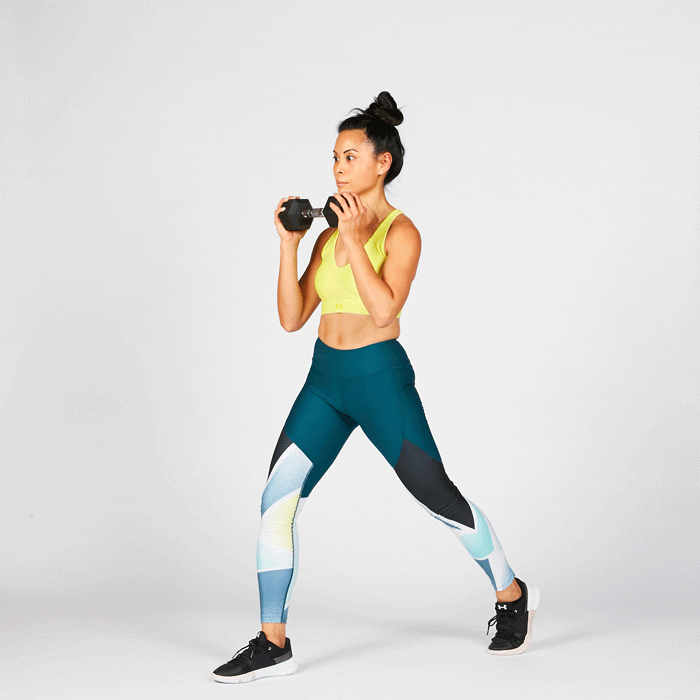 © image by MyFitnessPal
© image by MyFitnessPal
Begin in a semi-kneeling position on a mat or padded floor. Both knees should be bent at 90 degrees and the legs should be shoulder-width apart. Maintaining a tall stance, press down on both feet, squeeze your glutes, and straighten both legs. Continue to repeat this movement from the floor until you can stand up without bending your hips or letting your front knee buckle.
(Note: The image above shows a weighted split squat, but beginners should perform this movement without weights .)
DOWNLOAD
Now that proper foot placement and movement pattern have been established, the stride can be fine-tuned by offloading weight to the joints using a TRX suspension trainer .
THE EXERCISE: BACKWARD LUNGE WITH TRX
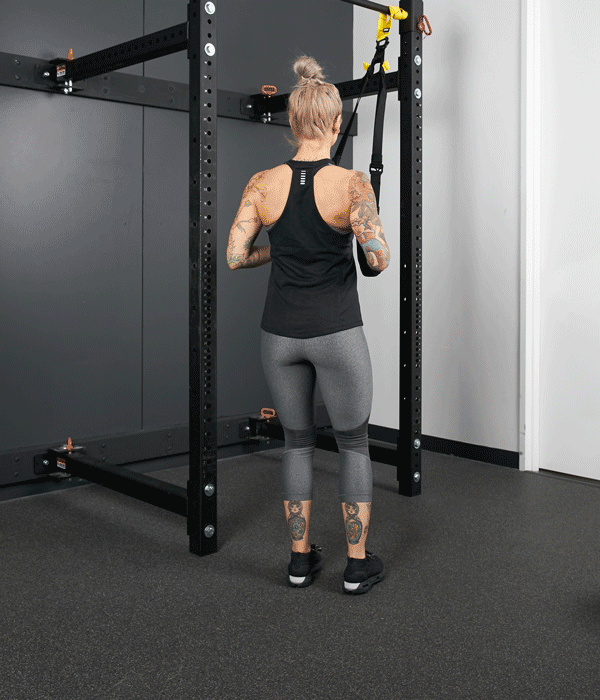 © image by MyFitnessPal
© image by MyFitnessPal
With the suspension trainer at half height, face the anchor point. Grasp the handles with your hands in front of your body and elbows softened, and balance on your right foot. Take your left leg back and lower your body like an elevator, checking that both knees are at the same 90 degree flexion as established in the previous split squats. Without leaning back, use the handles to offload your body weight and help you pull yourself back up to the starting position. When you repeat the movement, switching legs, make sure that the front knee remains over the middle toes. Keep your chest up and don’t bend your hips.
TO WALK
Once the mechanics of lunges are mastered, you can move on to a more functional movement that allows you to walk and run.
THE EXERCISE: WALKING LUNGES

Stand tall with your feet shoulder-width apart; you can put your hands on your hips or leave them at your sides. Step your right foot forward, landing in the same lunge position as in the previous two exercises. Lower your left knee until it is just above the ground. Press with both feet to straighten both legs. Stand up straight and strong, and then step forward with your left foot, repeating on the other side. Avoid “walking on a balance beam”; you can place your feet in a staggered line similar to how you would walk. Remember that you must lower the body in a straight line up and down as if it were an elevator.
CHANGE
Lunges aren’t just for moving forward. The same mechanics that were mastered in the previous exercises can be applied to lunges in all different directions.
THE EXERCISES: ALTERNATE SIDE LUNGE AND BOWING LUNGE
ALTERNATE SIDE LUNGE
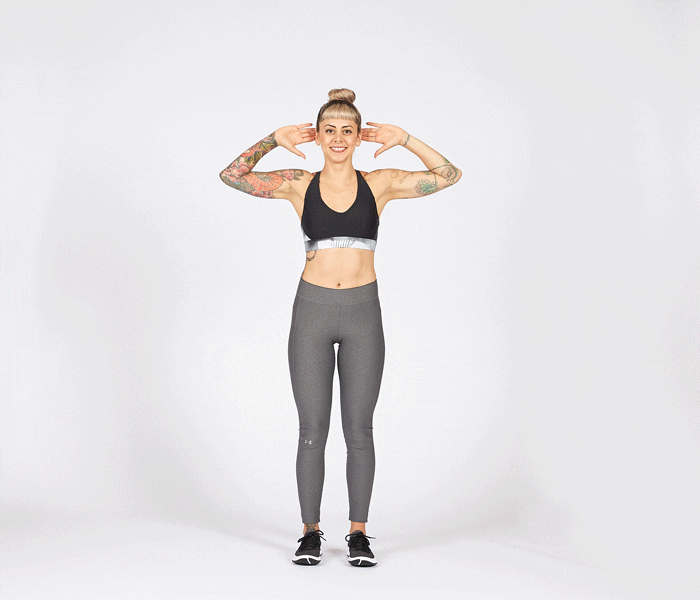 © image by MyFitnessPal
© image by MyFitnessPal
Stand up with your feet together. Take a step beyond hip-width with your right leg, keeping your right toes pointing forward as you land. Immediately upon contact with the ground, bend the knee and sink the right hip down and back; think of an “elevator, not an escalator” as in the lunge exercises above. Press down with your right foot to return to the starting position, and repeat on the left side.
(Note: The demo above shows a weighted side lunge, but beginners should perform this movement without weights .)
WEIGHTED SIDE LUNGE
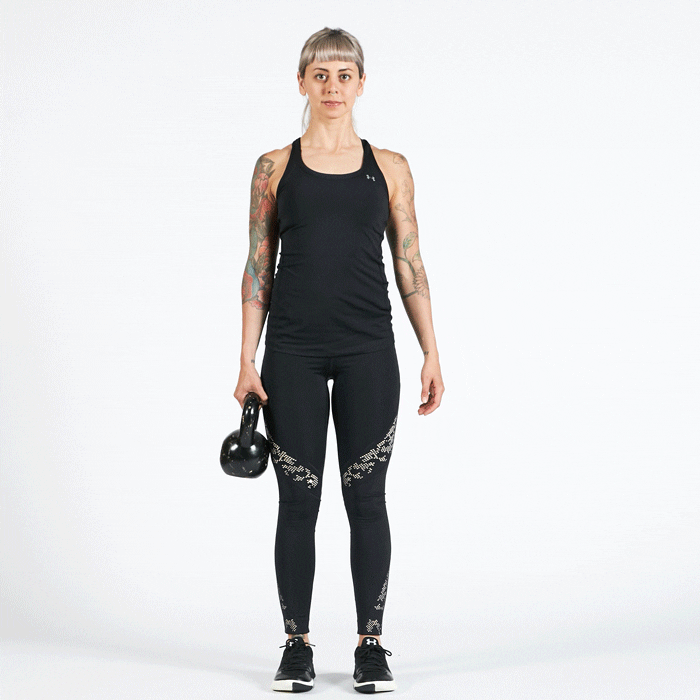 © image by MyFitnessPal
© image by MyFitnessPal
Begin standing with your feet shoulder-width apart and your arms hanging by your sides. He loops his right leg behind and outside of his left leg. He bends both knees, remembering to lower back down with an upright stance and to keep his right knee in line with his right middle toes. When your right thigh is almost parallel to the ground, press down with both feet to return to the starting position. Repeat the operation on the left side.
(Note: The demonstration above shows a weighted lunge, but beginners should perform this move without weight .)
CHARGING
The last step in our lunge learning journey is to add some external resistance. This step is not necessary unless you are totally comfortable with bodyweight lunges and have achieved perfect movement patterns. Select a weight that is challenging, but still allows you to maintain proper form (including bending your knees to 90 degrees, keeping your front knee in line with your middle toes, and keeping your body upright without bending your hips).
THE EXERCISES: WEIGHTED SPLIT SQUATS AND BARbell REVERSE LUNGE


